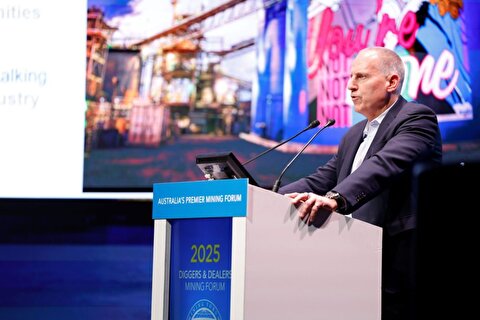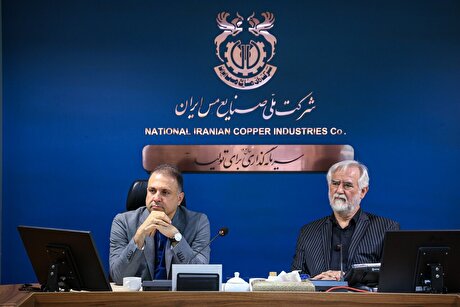
Ivanhoe’s giant Kamoa-Kakula copper project in DRC keeps getting bigger

The updated mineral resource estimate (MRE) puts the combined Kamoa-Kakula project at 423 million tonnes grading 4.68% copper, at a 3% cut off. Indicated mineral resource, in turn, now stands at 1.4 billion tonnes grading 2.7% copper, at a 1% cut-off.
The Kamoa deposit, one of two large copper assets on the Kamoa-Kakula mining licence is scheduled to produce first concentrate in the third quarter of 2021.
The 400 km2 mining concession comprises two large, near-surface, flat-lying, stratiform copper deposits. One of them, Kakula, is being fast-tracked to commercial production, with the initial 3.8-million-tonne-a-year mining operation scheduled to produce first concentrate in the third quarter of 2021.
Indicated mineral resources at the Kamoa deposit, discovered by Ivanhoe geologists in 2008, now total 760 million tonnes grading 2.73% copper, containing 45.8 billion pounds of copper.
It means that Kamoa’s indicated copper content increased by 15.5%, thanks mostly to drilling a targeted higher-grade mineralization in the northern part of deposit — North Bonanza.
“We see excellent opportunity to add further shallow, higher-grade copper resources in the northern portion of the mining licence,” the company’s vice president for resources, George Gilchrist, said in a statement.
The Vancouver-based miner has been working on Kamoa-Kakula for more than ten years. In 2015, China’s Zijin Mining Group got on board, becoming Ivanhoe’s partner in the project. Citic Metal, another Chinese firm, followed suit in 2018, becoming Ivanhoe’s top shareholder.
Over more than two decades, billionaire Robert Friedland and his team have made some of the biggest mineral discoveries in recent times.

Source: Wood Mackenzie (based on public disclosure; the Kakula 2019 PFS has not been reviewed by Wood Mackenzie).
Together with finding Africa’s largest copper deposit to date, other projects under the executive’s belt include building the Oyu Tolgoi copper- gold mine in Mongolia and discovering the Voisey’s Bay nickel deposit in Canada, which he sold in 1996 for more than $3 billion. Ivanhoe is also developing a platinum mine in South Africa.
Once fully developed, the mining complex in the DRC could produce 382,000 tonnes of copper a year during the first 10 years, climbing to 700,000 tonnes of copper after 12 years of operations.
Analysts say the giant project, believed to have the potential to become the world’s second-largest copper mine, could restore the DRC’s historical position as one of the world’s top copper producing countries.
Kakula would be the first of at least three mines planned for the Kamoa-Kakula copper complex.


Gold price edges up as market awaits Fed minutes, Powell speech

Glencore trader who led ill-fated battery recycling push to exit

Emirates Global Aluminium unit to exit Guinea after mine seized

UBS lifts 2026 gold forecasts on US macro risks

Iron ore price dips on China blast furnace cuts, US trade restrictions

Roshel, Swebor partner to produce ballistic-grade steel in Canada

EverMetal launches US-based critical metals recycling platform

US hikes steel, aluminum tariffs on imported wind turbines, cranes, railcars

Afghanistan says China seeks its participation in Belt and Road Initiative

First Quantum drops plan to sell stakes in Zambia copper mines

Ivanhoe advances Kamoa dewatering plan, plans forecasts

Texas factory gives Chinese copper firm an edge in tariff war

Pan American locks in $2.1B takeover of MAG Silver

Iron ore prices hit one-week high after fatal incident halts Rio Tinto’s Simandou project

US adds copper, potash, silicon in critical minerals list shake-up

Barrick’s Reko Diq in line for $410M ADB backing

Gold price gains 1% as Powell gives dovish signal

Electra converts debt, launches $30M raise to jumpstart stalled cobalt refinery

Gold boom drives rising costs for Aussie producers

First Quantum drops plan to sell stakes in Zambia copper mines

Ivanhoe advances Kamoa dewatering plan, plans forecasts

Texas factory gives Chinese copper firm an edge in tariff war

Pan American locks in $2.1B takeover of MAG Silver

Iron ore prices hit one-week high after fatal incident halts Rio Tinto’s Simandou project

US adds copper, potash, silicon in critical minerals list shake-up

Barrick’s Reko Diq in line for $410M ADB backing

Gold price gains 1% as Powell gives dovish signal

Electra converts debt, launches $30M raise to jumpstart stalled cobalt refinery
















